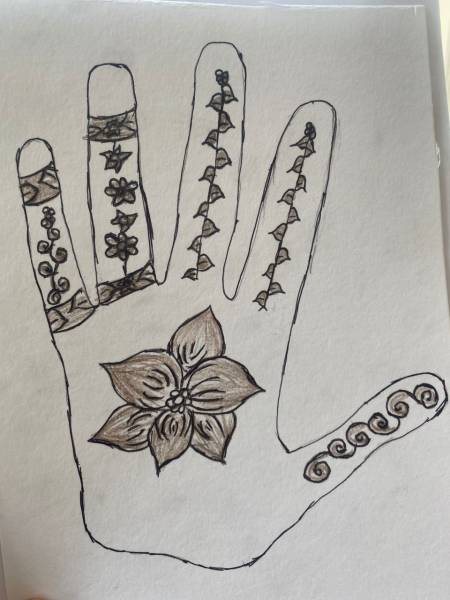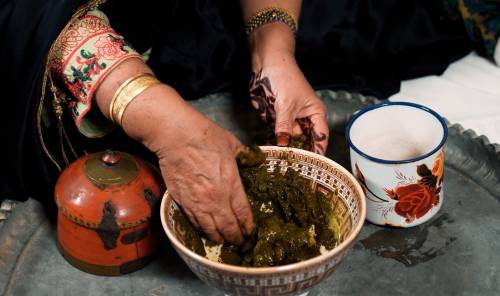Henna: rituals, aesthetic and social practices
United Arab Emirates, Algeria, Bahrain, Egypt, Iraq, Jordan, Kuwait, Mauritania, Morocco, Oman, State of Palestine, Qatar, Saudi Arabia, Sudan, Tunisia and Yemen
Inscribed in 2024 (19.COM) on the Representative List of the Intangible Cultural Heritage of Humanity

Henna is a deciduous tree that grows in hot regions. Perceived as sacred by communities in Northern Africa and the Middle East, its leaves are harvested twice a year, left to dry, then ground and processed to create a paste. The specific ingredients and techniques used to prepare the paste vary according to the intended use and country. Henna paste is commonly used by women for adornment, such as to dye hair and fingertips or to decorate hands and feet. A symbol of joy, it is used in everyday life and on festive occasions such as births and weddings. Henna branches, leaves and paste are also used in crafts and for medicinal purposes, including the treatment of certain skin diseases. Its use is frequently accompanied by oral expressions such as chants, songs, proverbs and poems, and is linked to centuries-old societal rules and traditions. This includes knowledge related to the cultivation and care of the henna tree and the preparation and application of the paste. Families and communities transmit the traditions through observation and hands-on practice. Today, organizations, beauty centres, universities and the media also contribute to their transmission. A key component of traditional events, henna rituals enhance social bonds and promote communication.

















